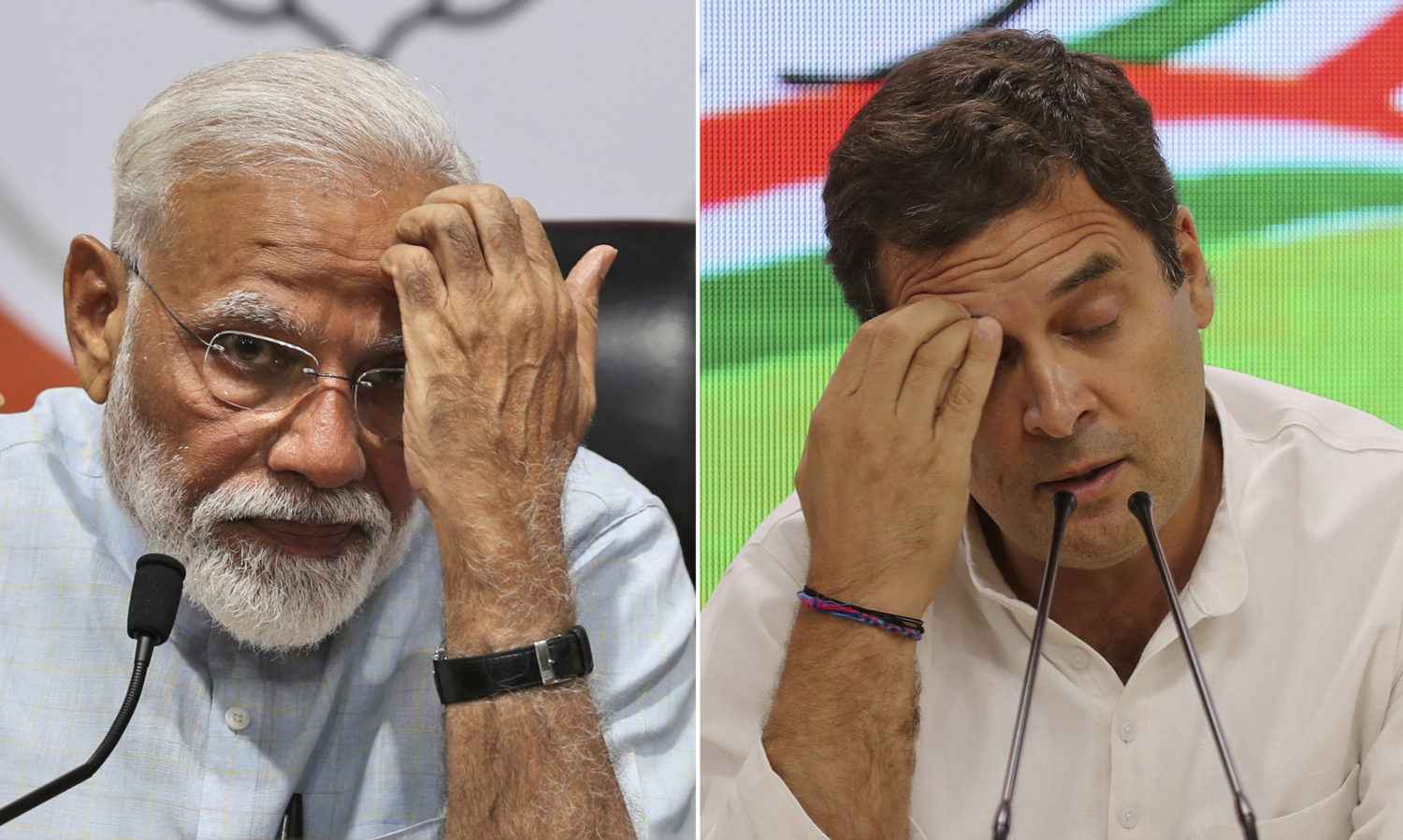Elections in the world’s largest democracy end this week. And hoaxes about voter fraud have taken over social media.
On Tuesday, Vishvas News, a fact-checking site based in India, debunked a series of viral photos that claimed to depict stolen electronic voting machines that officials confiscated in the state of Bihar. India Today also debunked the images, saying that they were never even used for voting — they were part of a training exercise.
That kind of social media misinformation has become the norm in India, where platforms like Facebook and WhatsApp have their largest user bases.
Over the past year, rumors about child kidnappers on WhatsApp have resulted in the murder of dozens of innocent people. Fact-checkers have been inundated with bogus images about major events, such as the Kashmir terrorist attack. And tech companies have scrambled to get a handle on the spread of false claims on their platforms.
But this week’s voter fraud hoaxes are a little different: They were spread by major political parties, not just rogue social media users.
In its fact check, Vishvas reported that Rashtriya Janata Dal (RJD), a political party based in Bihar, originally shared the out-of-context images of voting machines both on Twitter and Facebook. The latter post had racked up more than 108,000 likes, shares and comments as of publication.
For contrast, Vishvas’ fact check only had a little more than 3,000 engagements. And India Today’s had even fewer, with about 830.
Below is a chart with other top fact checks since last Tuesday in order of how many engagements they got on Facebook, according to data from BuzzSumo and CrowdTangle. Read more about our methodology here.
The bogus photos of voting machines quickly spread from RJD to other social media users, amassing an even larger reach on social media. And it wasn’t the first hoax to spread at the hand of an official political party in India.
Last month, The Atlantic reported that the country’s main parties had adopted misinformation tactics in order to spread falsehoods and propaganda about their opponents. It cited several WhatsApp groups run by the Bharatiya Janata Party (BJP), to which Prime Minister Narendra Modi belongs, that have spread false or misleading claims over the course of the election campaign. Modi’s own smartphone app has also been a source of misinformation.
In India, those kinds of tactics have become common among other factions too, such as the opposition Congress Party. And RJD’s bogus photos weren’t the only voting-related hoax to go viral this week in India, where officials counted ballots today.
On Tuesday, India Today debunked a viral video that falsely claims the BJP is trying to change votes on electronic voting machines. The video, which was published by a conspiracy website, features a female news anchor attributing the rumor to a source in the Indian government.
But India Today couldn’t confirm the rumor, despite the fact that some politicians have repeated it. And the website that published the video frequently pedals anti-BJP conspiracies.
Meanwhile, India Today’s own coverage has also become fodder for voting-related misinformation.
In a fact check published last week, Boom Live reported that social media users had taken an India Today promotional video out of context to spread falsehoods about the election outcome. The video used dummy data for the news outlet’s technology checks in preparation for exit polling, but several people shared screenshots of the footage online under the guise that it was real.
India Today clarified its own video soon after Boom’s fact check was published. The entire incident, when analyzed alongside other falsehoods fact-checkers debunked this week, shows how voter fraud hoaxes are among the most powerful types of misinformation on the internet.
In Brazil’s presidential election, hoaxes about voter fraud run rampant
In the lead-up to Brazil’s presidential election in the fall, hoaxes about voter fraud plagued social media platforms. Bogus videos of voting machines automatically casting ballots for certain candidates — some of which were shared by a contributor to the infamous American conspiracy site InfoWars — racked up thousands of retweets on Twitter. And an analysis of some of the top falsehoods on WhatsApp revealed several out-of-context photos that purported to show voter fraud.
“People are trying to attack the electronic polling system in order to delegitimize whoever is the winner of the election,” Tai Nalon, director of Brazilian fact-checking site Aos Fatos, told Poynter in October.
That trend continued during midterm elections in the United States, when several misinformation reporters noted the prevalence of voter fraud misinformation on social media.
Platforms like Facebook have said that they remove false information about voting logistics and requirements. But, as The New York Times reported in April, Indian politicians and parties have become sources of misinformation themselves. And that makes it harder for Facebook to respond outside of its partnership with fact-checking organizations, which often can’t keep up with the deluge of false claims.
“Now all the major Indian parties have sophisticated disinformation strategies, which include posting false and manipulated photos and videos and coordinating posts across a network of paid acolytes and volunteers,” reporters Vindu Goel and Sheera Frenkel wrote. “That has put Facebook, which has said it does not want to stifle free expression, in an awkward position.”
Disclosure: Being a signatory of Poynter’s International Fact-Checking Network code of principles is a necessary condition for joining Facebook’s fact-checking project.







